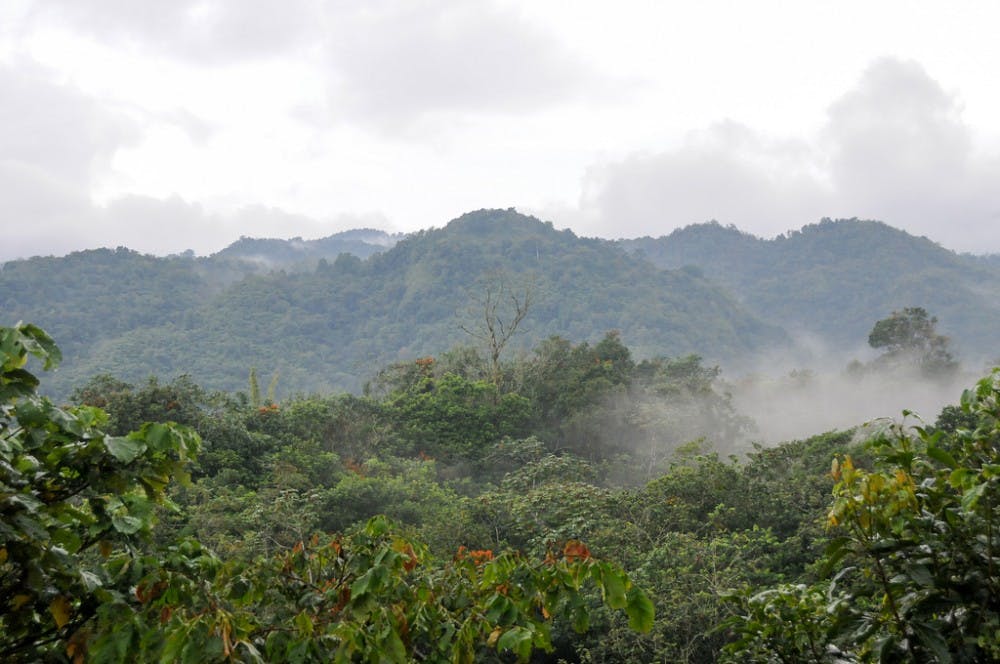The cloud forests of Honduras are a sight to behold, as they are characterized by a low-level cloud cover at the canopy level. Also known as a montane rainforest, this region has heavy rainfall and constant condensation in the air, a result of the cooling of moisture-laden air currents deflected upward by the mountains. Moisture is abundant from water vapor, and due to elevation and climate conditions, the ecosystem is fed directly by clouds.
Monte Neate-Clegg, a doctoral student at the University of Utah and lead author of a 10-year study looking into climate change in Honduras, explained why cloud forests are special.
“The tropics hold most of the world’s biodiversity to begin with, and then the mountain slopes hold the greatest biodiversity within the tropics,” Neate-Clegg said according to ScienceDaily.
The cloud forest is a beautiful habitat that hosts a variety of life; however, it seems that climate change and deforestation are taking a toll, there, too.
According to the study, which was conducted by a collective group of scientists and was published in Biotropica, birds seemed to be retreating from the territory. Examination of bird populations in Cusuco National Park, located in Honduras, revealed the movement of peak bird diversity to higher and higher elevations.
Most species were found to be moving up-slope at a rate of around 23 feet (seven meters) each year.
“By looking across all species, we could show that the diversity was increasing at higher elevations and decreasing at lower elevations,” Neate-Clegg said.
Neate-Clegg explained the impact of this migration caused by climate change and deforestation.
“A lot of these species are specialized to these mountain ranges and they don’t have a lot of options as to where to go, should things go wrong,” he said.
The uniqueness of certain species leaves them more prone to the risk of extinction, as the effects of global warming continue to alter the landscape of the Earth, particularly those environments that are more specialized. The flora of this particular area of Honduras includes short and crooked trees, as well as mosses, climbing ferns, lichens and epiphytes (air plants) that inhabit the trunks and branches of trees. The fauna of the area includes at least six amphibian species that exist nowhere else on Earth and animals of all sizes, from jaguars to hummingbirds.
Reasonable causes for the shift in habitat for the birds include progressing development and deforestation within the park for agricultural purposes.
“Every year we go back and resurvey, and transects that were forested the previous year are suddenly cut down,” Neate-Clegg says. “They are encroaching year on year.”
But perhaps the more important factor is the change to the local climate. As the study notes, even “increased protection is unlikely to mitigate the effects of climate change.”
This is not the first time that climate change has threatened the livelihood of birds. A study published almost a year ago documented the effects of climate-related changes on Hawaiian bird numbers, breeding and molting.
The study found that some birds are affected by changes in the climate. Three species of native birds, ‘i’iwi, ‘apapane and Hawai’i ‘amakihi, had breeding seasons timed to the availability of ‘ohi’a lehua flowers, which were coincidental with periods of heavy rainfall.
“The susceptibility of many Hawaiian birds to climatically-induced changes in their food web is alarming when considering that the archipelago has been subject to an increasingly drier climate during the last 30 years,” Jared Wolfe, a research ecologist and lead author of the study, said according to ScienceDaily.
Affected populations of birds are capable of inducing irreversible changes on an ecosystem. Although biodiversity is a wondrous trait, regions with greater biodiversity are less resilient against the effects of climate change and global warming.
The best tactic to combating this problem of dying ecosystems is to reverse — or at least halt — the effects of climate change by taking active steps against global warming.





